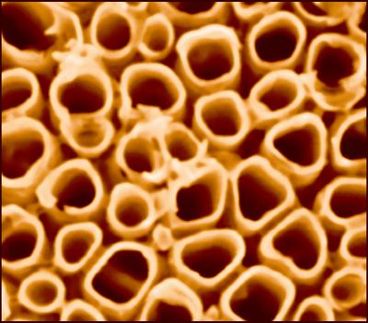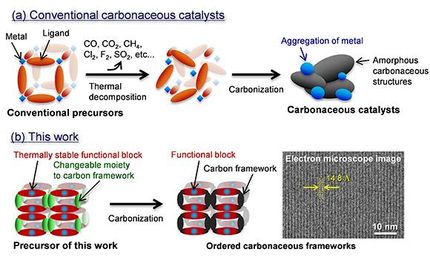Novel fuel cell catalyst lowers need for precious metal
Advertisement
fuel cells could create a breakthrough for electric cars, because refuelling them is fast and easy, just like your traditional gas guzzler. But there's an obstacle. Current fuel cells need platinum in order to work. And that's expensive.
Now chemists from Copenhagen, Potsdam and Hanau have taken the first step towards producing fuel cells using very little of the precious metal.
At the University of Copenhagen Matthias Arenz has specialized in testing the catalysts that do the actual work in fuel cells. Presented with a so called "Core Shell catalyst" developed by Clarkson University chemist Dan Goia for fuel cell company Umicore, he soon realized that this catalyst was special and testing it would deserve an unusual effort.
The catalyst in a fuel cell taps electrical current from a reaction fusing hydrogen and oxygen into water. This takes place in a complex reaction at the surface of the platinum, so more surface means more electricity.
In traditional fuel cells the surface area of platinum is maximized by grinding the precious metal into exceedingly small particles and suspending them in a frame of carbon. But there's a catch or two. If the particles become too small, they lose their converting power. Tend to clot together. And over time the carbon-frame tends to burn away which again leads to clotting. These scenarios make the particles lose surface area, and with less surface area, catalysts produce less current.
Larger spheres don't need the fragile carbon scaffold, and they ought not to clot as badly. But they would require much more platinum to make. Until now.
The novel catalyst from Umicore has gotten around this problem by coating larger spheres of less precious metal with a thin skin of platinum. If these do not clot the catalyst should keep producing electricity at top capacity for much longer than cells with small particles of platinum.
But figuring out whether particles clot or not is hard, explains Matthias Arenz.
"In an electron microscope we find a particular particle. Then we run the fuel cell. After running gasses over the catalyst, finding that same particle is a bit like finding a needle in a haystack. But we have our ways", smiles Dr. Arenz.
Having done a series of tests, Dr. Arenz is able to conclude that the novel large-sphere catalyst retains its full converting power. The catalyst produces the same amount of electricity as small particle models. But with bigger spheres, chances are that it will keep on producing at top capacity for a longer time.
Only one problem remains. The less precious spheres coated with platinum is…Gold.
"Dan Goia and Umicore have been the first to show, that it is possible to create these thin shells of platinum using simple and cheap chemistry. Now they need to show, that they can do it on spheres of a somewhat cheaper material. If they succeed in this, I'm sure my tests will show, that cheap and efficient fuel cells are on their way", concludes Dr. Matthias Arenz.





























































